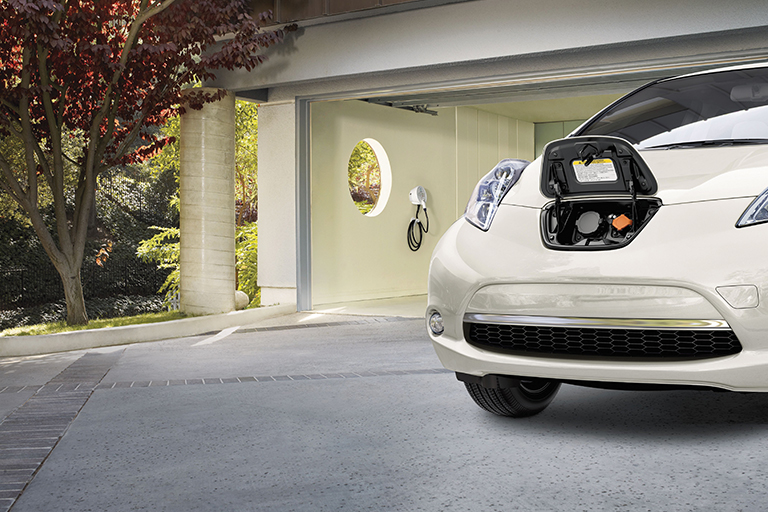By Pat Keegan and Christine Grant
The electric vehicle (EV) market is growing rapidly. There are good reasons why EVs are becoming more popular, but there are also a few potential drawbacks.
Let’s start with the basics: EVs are vehicles that plug into the electric grid for some or all of their power. There are two primary types of EVs. All-electric EVs, such as the Nissan LEAF, are powered entirely with electricity. Plug-in hybrid EVs, such as the Chevrolet Volt, are dual-fuel cars, meaning both the electric motor and the internal combustion engine can propel the car.
A key benefit of EVs is that a driver’s trips to the gas station are either vastly reduced or eliminated altogether. However, in lieu of gas refueling, EVs need to be recharged. At the lowest charging level, called Level 1, an hour of charging typically provides two to five miles of range per hour. Because the average light-duty car is parked for 12 hours per day at a residence, many EV drivers can use Level 1 charging for most of their charging needs. The fastest charging level, called DC Fast-Charging, can provide 60 to 80 miles of range in a 20-minute period.
Charging with electricity is nearly always cheaper than fueling with gasoline. An electric gallon, or “eGallon, ”represents the cost of driving an EV the same distance a gasoline-powered vehicle could travel on one gallon of gasoline. On average, an eGallon is about one-third the cost of a gallon of gasoline. Another benefit of charging with electricity is that, throughout many parts of the country, it is a cleaner fuel source than gasoline. Although the exact environmental benefits of driving an EV will vary, one recent study found that two-thirds of Americans live in regions where driving an EV is cleaner than driving a 50 MPG gas-powered car.
Another key reason for the rise in EV ownership is because of recent reductions in the upfront cost of the cars. The batteries used in EVs are the most expensive component of the cars, but thanks to improving production methods, the cost of the batteries dropped by more than 35 percent since 2010, and costs are expected to keep dropping. Because of these cost reductions and technology improvements, EVs are hitting some major performance and affordability milestones. For example, in late 2016, General Motors released the Chevrolet Bolt, an all-electric EV with an estimated range of 238 miles per charge, costing about $30,000 after rebates.
Although even longer range and more affordable EVs are expected to hit the market soon, one of the key drawbacks of EVs is that most models currently have a range of less than 100 miles per charge. More and more public charging stations are available across the United States, but “range anxiety” is still a concern for many potential buyers. Fortunately, if you are considering an EV, keep in mind that the average American’s daily driving patterns are well-suited for EV use. More than half of all U.S. vehicle trips are between one and 10 miles, and even in rural areas the average daily drive distances for typical errands and commutes are well within the range of most currently available EVs.
EVs are also well-suited for many commercial applications. For example, EVs are now being used as part of ridesharing services like Uber, where average trip distances are between just five and seven miles. Companies like Frito-Lay and FedEx are also introducing EVs into their delivery fleets, and a growing number of municipalities are buying electric buses. One of the primary draws of EVs for commercial use is their minimal maintenance requirements.
If you are interested in learning more about EVs, contact a local car dealer to schedule a test drive. Many curious drivers are impressed by the performance of EVs, especially the instant torque provided by the electric motor.
Your electric co-op can also be a great resource. More and more co-ops own EVs as part of their fleets and may offer “ride and drive” events. Dozens of co-ops also offer reduced electricity rates for “off peak” EV charging, which can help save even more money on fueling.
This column was co-written by Pat Keegan and Christine Grant of Collaborative Efficiency.

